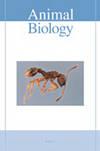北方黄颊冠长臂猿(Nomascus annamensis)在游客面前以休息为代价进行更多的旅行和扫描
IF 0.9
4区 生物学
Q2 ZOOLOGY
引用次数: 2
摘要
旅游业是全球经济快速增长的贡献者,以自然为基础的旅游业,特别是在亚洲和非洲,正在蓬勃发展。通过创造就业机会和收入,NBT有可能在经济贫困但生物多样性价值高的地区打击森林砍伐。受乌干达和卢旺达大猩猩旅游成功的启发,东南亚和中国启动了几个长臂猿旅游项目。尽管有这些方案,但尚未进行任何研究来调查旅游业对长臂猿行为的影响。为了解决这一问题,我们在游客在场和不在场的情况下,在柬埔寨文赛暹庞国家公园(VSSPNP)收集了一群北方黄颊冠长臂猿(Nomascus annamensis)的观测数据。我们发现,当游客在场时,人们花在扫描环境和以休息为代价旅行上的时间显著增加。我们还发现,在游客面前,个人更有可能自我打扮。这些结果突出了科学研究在实施成功、低影响的NBT计划中的重要性,这些计划考虑了动物行为的变化。我们正在VSSPNP和中国高黎贡山国家级自然保护区继续收集长臂猿的数据,目的是将国际自然保护联盟关于类人猿旅游的最佳实践指南扩展到包括小型类人猿。本文章由计算机程序翻译,如有差异,请以英文原文为准。
Northern yellow-cheeked crested gibbons (Nomascus annamensis) travel and scan more at the cost of rest when in the presence of tourists
The tourism sector is a fast-growing contributor to the global economy, and nature-based tourism (NBT), particularly in Asia and Africa, is booming. Through the creation of jobs and revenue NBT has the potential to combat deforestation in regions that are economically poor, but of high biodiversity value. Inspired by the success of gorilla tourism in Uganda and Rwanda, several gibbon tourism projects have been initiated in Southeast Asia and China. Despite the existence of these programmes, no research has been done to investigate the impact of tourism on the behaviour of gibbons. To address this, we collected observational data on a group of northern yellow-cheeked crested gibbons (Nomascus annamensis) at Veun Sai-Siem Pang National Park (VSSPNP), Cambodia, in the presence and absence of tourists. We found there was a significant increase in the amount of time individuals spent scanning their environment and travelling at the cost of rest when in the presence of tourists. We also found that individuals were significantly more likely to self-groom in the presence of tourists. These results highlight the importance of scientific research in implementing successful, low-impact NBT programmes that consider animal behavioural changes. We are continuing to collect data on gibbons at VSSPNP and at Mt. Gaoligong National Nature Reserve, China with the aim of extending the IUCN’s best-practice guidelines for great-ape tourism to include the small apes.
求助全文
通过发布文献求助,成功后即可免费获取论文全文。
去求助
来源期刊

Animal Biology
生物-动物学
CiteScore
2.10
自引率
0.00%
发文量
34
审稿时长
3 months
期刊介绍:
Animal Biology publishes high quality papers and focuses on integration of the various disciplines within the broad field of zoology. These disciplines include behaviour, developmental biology, ecology, endocrinology, evolutionary biology, genomics, morphology, neurobiology, physiology, systematics and theoretical biology. Purely descriptive papers will not be considered for publication.
Animal Biology is the official journal of the Royal Dutch Zoological Society since its foundation in 1872. The journal was initially called Archives Néerlandaises de Zoologie, which was changed in 1952 to Netherlands Journal of Zoology, the current name was established in 2003.
 求助内容:
求助内容: 应助结果提醒方式:
应助结果提醒方式:


